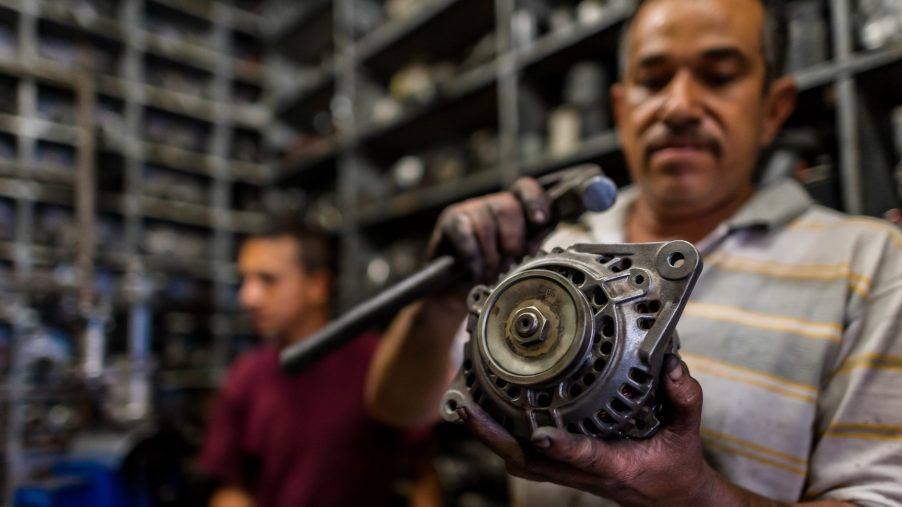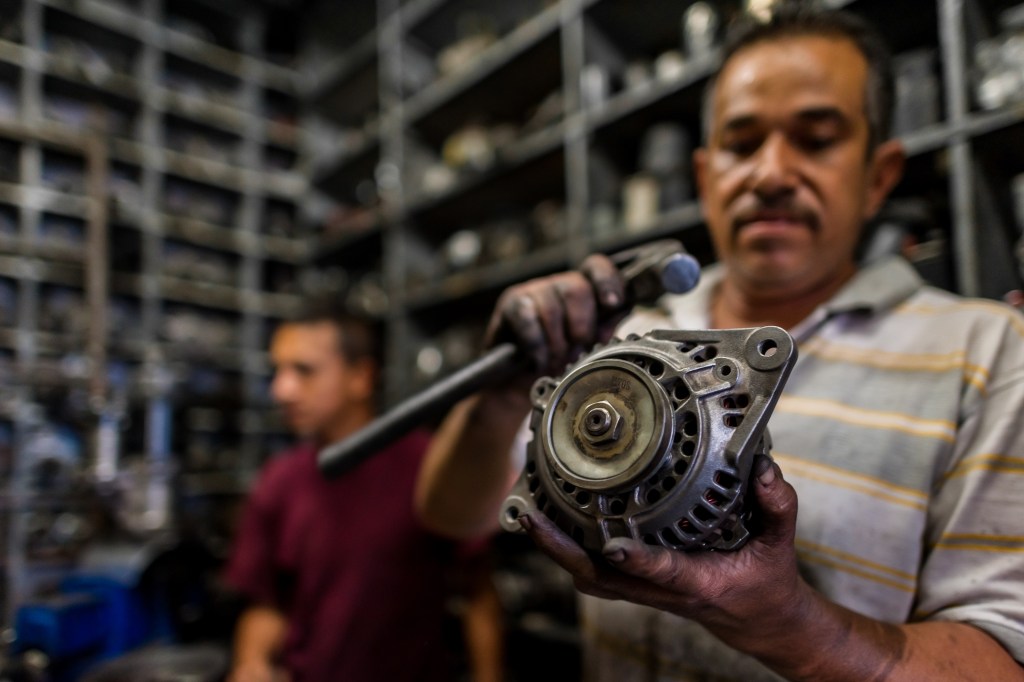
What Does the Alternator in Your Car Do?
Even if your car isn’t all-electric, it relies on an electrical system that can appear fiendishly complex, especially where maintenance is concerned. But once you start following the current, things become noticeably clearer. And in many ways, your alternator is at the heart of this flow. Because while the battery helps start your car, it’s the alternator that keeps it going.
The alternator keeps your car’s lights on and prevents its battery from going flat

Whether your ignition switch works via a key or button press, it completes the circuit between your car’s battery, spark plugs, and starter motor. The starter motor spins the flywheel, the spark plugs fire, and voila, your engine’s running. However, no battery has an infinite amount of juice. Furthermore, your car’s battery doesn’t just power the starter motor. It also lets you use the lights and accessories when the engine isn’t running.
In short, your car’s battery regularly burns through a lot of power. But that’s where the alternator comes in. After your engine’s running, the alternator recharges the battery back to full strength. Plus, rather than the battery, it powers your car’s lights, accessories, and other electrical systems when the engine’s on, The Drive notes.
Remember that earlier bit about the alternator being the heart of your car’s electrical current flow? Well, that’s not too far from reality. Admittedly, blood isn’t the best metaphor for electricity. And technically, you could start a car with a bad alternator if the battery was fresh and strong enough. But just like you wouldn’t live long without a heart, a car with a bad alternator will only run briefly.
It’s an all-in-one belt-driven generator and AC-DC converter
Another reason why the heart analogy is an imperfect one is that your heart doesn’t make blood. Your car’s alternator, on the other hand, makes electricity. Originally, all cars used generators, aka dynamos or magnetos, to top up their batteries and power their few electrical accessories. And while the alternator does all that today, it’s still technically a generator, too. Only it does its job in a more sophisticated way.
There’s a pulley at one end of the average car alternator. The engine’s serpentine belt spins this pulley which in turn spins the attached magnet-covered cylindrical rotor. As the rotor spins, it generates an alternating current (AC) within the copper wiring of the surrounding stator. And if this sounds familiar, it’s because this is essentially how electric car motors work. So, in a way, an alternator is also an electric motor.
However, we’re not done yet. Although the alternator makes AC, your car’s battery and electrical system use direct current (DC). But that’s why alternators also have solid-state diodes to convert the AC to DC, The Drive explains. These are significantly simpler, lighter, more reliable, and longer-lasting than the mechanical devices dynamos used. And after it’s converted, the current passes through a voltage regulator, aka rectifier, which ensures the battery isn’t being overcharged.
Alternators aren’t interchangeable and not all cars use them
Speaking of charging, alternators don’t just vary in overall size. They’re rated according to their amperage, and some cars require high-amp versions because of their extra accessories. Hence why police vehicles, with their extra lights, computers, and other gizmos, require heavy-duty alternators. Technically, you could put an upgraded unit in your car without issue. But it’s unnecessary unless you’re planning further electrical upgrades, such as a better audio system.
Also, while modern alternators are constructed in similar ways, they’re not necessarily identical to each other. So, even if the mounting points line up, don’t swap the one in your sedan with the one in your pickup truck. That’s especially true if you have a hybrid vehicle or an EV.
Hybrid cars and EVs don’t have or need alternators. Instead, they recharge their 12-volt batteries using their lithium-ion packs and DC-DC converters, Cars.com explains. Mild hybrids are a minor exception, though. They also lack alternators, but that’s because their small electric motors serve as all-in-one starter motor/alternator replacements.
So, there you have the humble alternator. It might be small, but it’s a vital part of your car.
Follow more updates from MotorBiscuit on our Facebook page.


